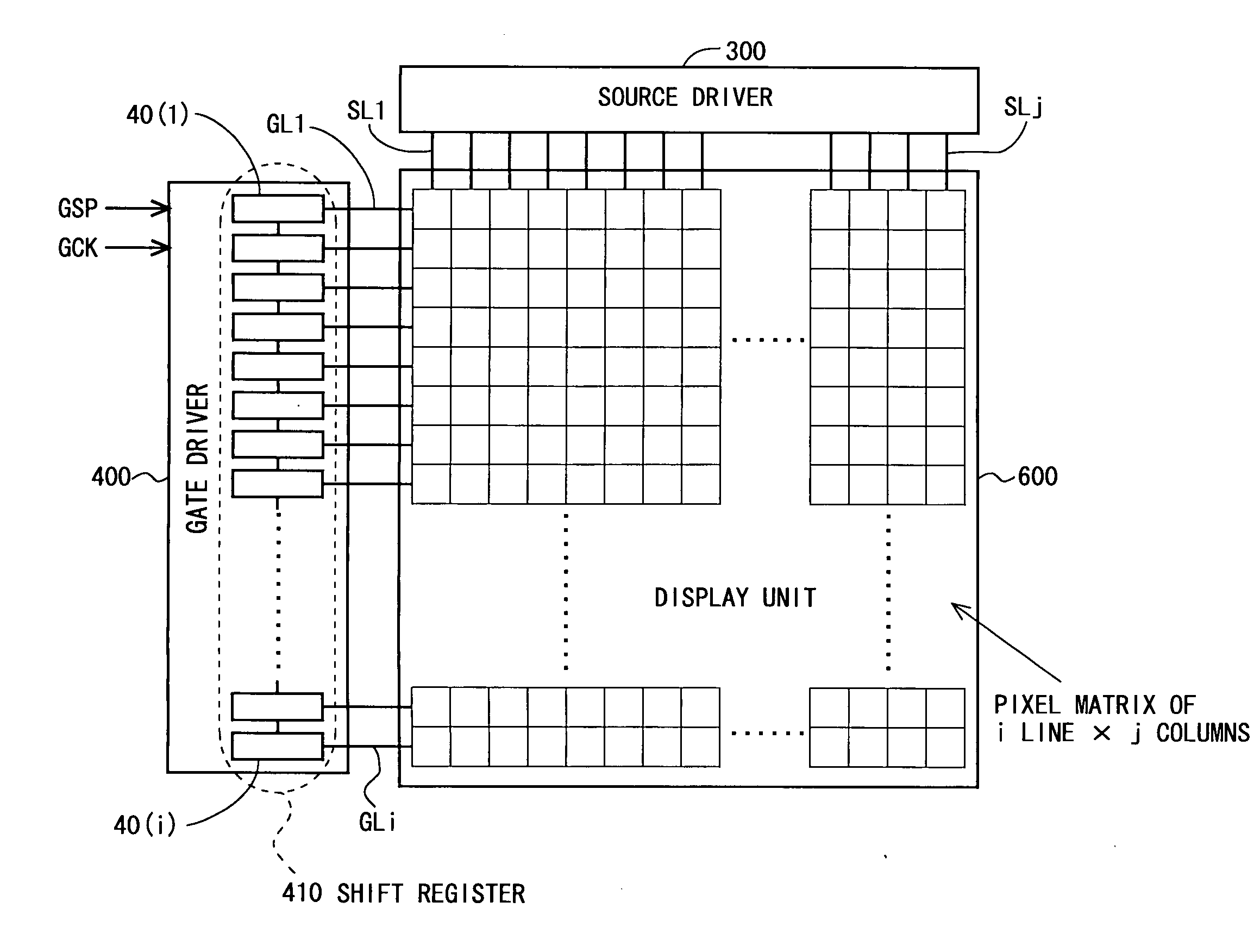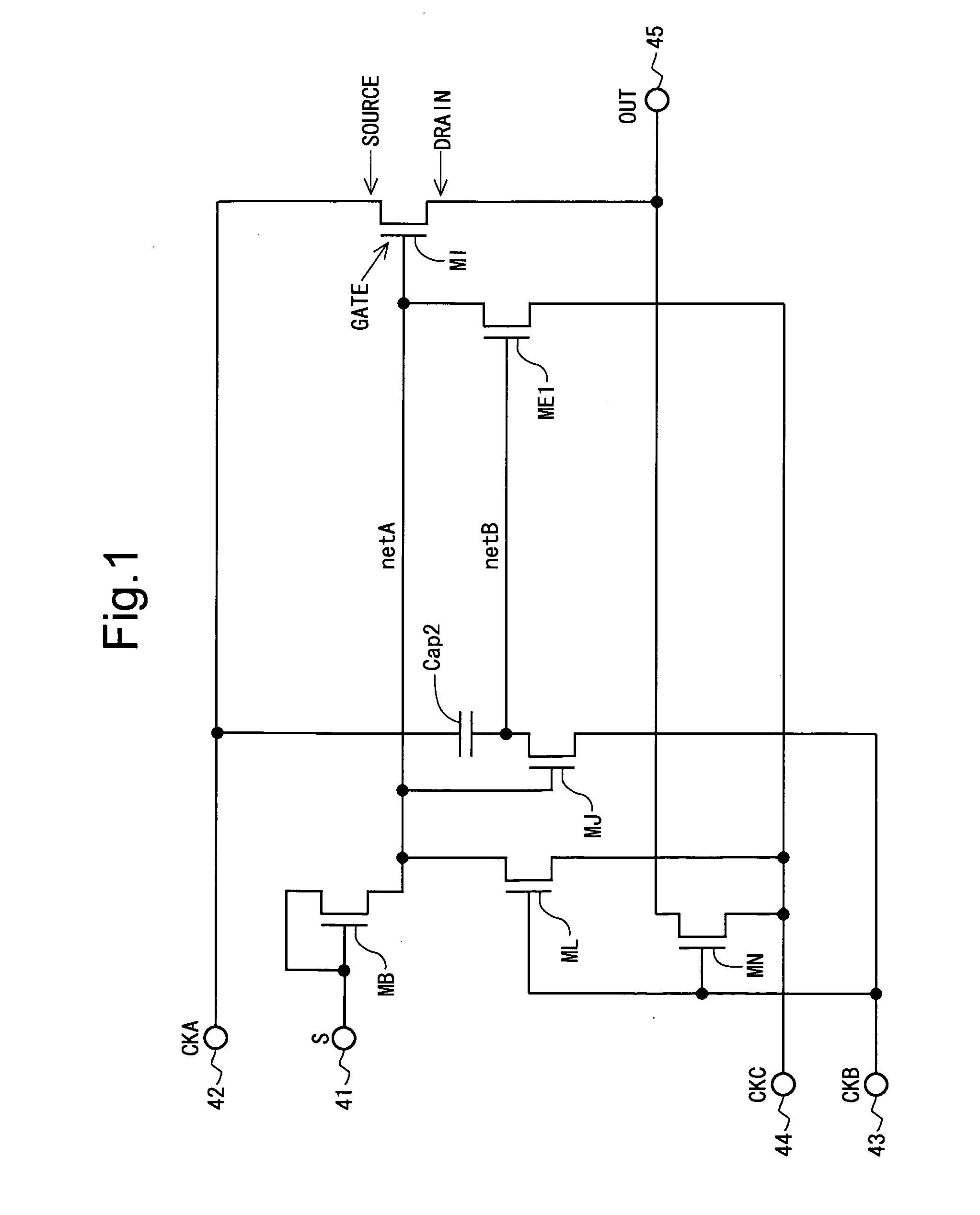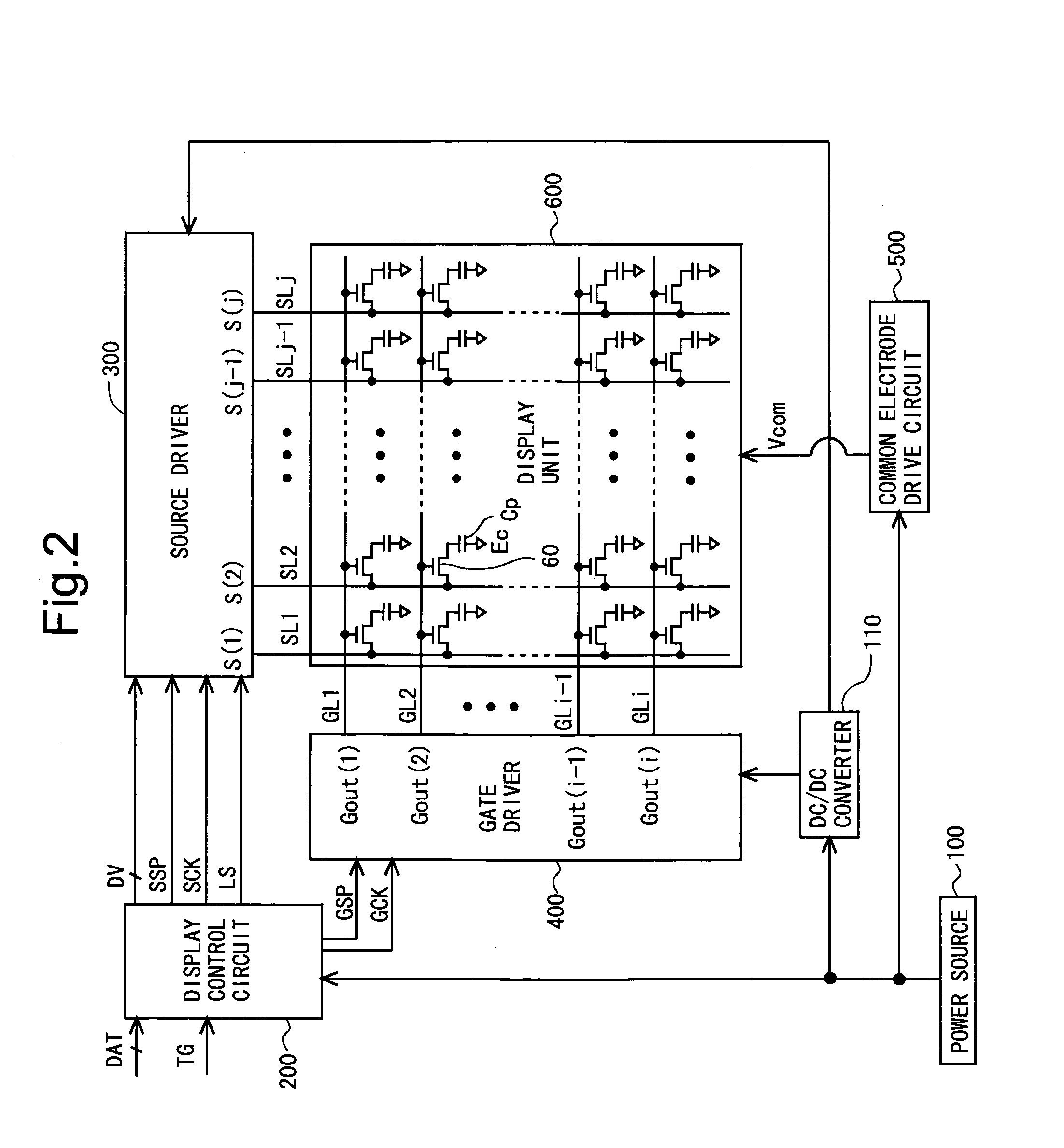Scanning signal line drive circuit, shift register and display device
a drive circuit and signal line technology, applied in the direction of digital storage, instruments, computing, etc., can solve the problem of not being able to transfer video signals indicating pixels, and achieve the effect of suppressing the degradation of the switching elements provided for discharging the first-node and the output-node, suppressing and effectively preventing the degradation of the switching elements
- Summary
- Abstract
- Description
- Claims
- Application Information
AI Technical Summary
Benefits of technology
Problems solved by technology
Method used
Image
Examples
first embodiment
1. First Embodiment
1.1 Overall Configuration and Operation
FIG. 2 is a block diagram illustrating an overall configuration of an active matrix-type liquid crystal display device according to a first embodiment of the present invention. As shown in FIG. 2, the liquid crystal display device is provided with a power source 100, a DC / DC converter 110, a display control circuit 200, a source driver (video signal line drive circuit) 300, a gate driver (scanning signal line drive circuit) 400, a common electrode drive circuit 500, and a display unit 600. Typically, the display unit 600 and the gate driver 400 as a drive circuit are formed on the same substrate, i.e., monolithically.
The display unit 600 includes a plurality of (j) source bus lines (video signal lines) SL1 to SLj, a plurality of (i) gate bus lines (scanning signal line) GL1 to GLi, and a plurality of (i×j) pixel formation portions respectively provided at intersections of the source bus lines SL1 to SLj and the gate bus lines...
second embodiment
2. Second Embodiment
2.1 Overall Configuration and the Like
An overall configuration, a configuration in outline of a gate driver, and a configuration of a shift register according to this embodiment are the same as those described in the first embodiment with reference to FIG. 2 to FIG. 4, and therefore explanations thereof are omitted. Further, waveforms of first to third gate clock signals as well as of scanning signals are the same as those described in the first embodiment with reference to FIG. 5 and FIG. 6, and therefore explanations thereof are omitted.
2.2 Configuration and Operation of Bistable Circuit
FIG. 12 is a circuit diagram illustrating a configuration of a bistable circuit according to this embodiment. In this embodiment, a thin film transistor MK1 (ninth switching element) and a capacitor Cap1 are provided, in addition to the components described in the first embodiment with reference to FIG. 1. Regarding the thin film transistor MK1, a gate terminal thereof is connec...
third embodiment
3. Third Embodiment
3.1 Overall Configuration and the Like
An overall configuration and a configuration in outline of a gate driver according to this embodiment are the same as those described in the first embodiment with reference to FIG. 2 and FIG. 3, and therefore explanations thereof are omitted. Further, waveforms of first to third gate clock signals as well as of scanning signals are the same as those described in the first embodiment with reference to FIG. 5 and FIG. 6, and therefore explanations thereof are omitted.
FIG. 14 is a block diagram illustrating a configuration of the shift register 410 within the gate driver 400 according to this embodiment. In this embodiment, each bistable circuit is provided with an input terminal for receiving a reset signal R, in addition to the input terminals and the output terminal described in the first embodiment. In addition, the input terminal for receiving the reset signal R is configured to be supplied with the state signal OUT that is ...
PUM
 Login to View More
Login to View More Abstract
Description
Claims
Application Information
 Login to View More
Login to View More - R&D
- Intellectual Property
- Life Sciences
- Materials
- Tech Scout
- Unparalleled Data Quality
- Higher Quality Content
- 60% Fewer Hallucinations
Browse by: Latest US Patents, China's latest patents, Technical Efficacy Thesaurus, Application Domain, Technology Topic, Popular Technical Reports.
© 2025 PatSnap. All rights reserved.Legal|Privacy policy|Modern Slavery Act Transparency Statement|Sitemap|About US| Contact US: help@patsnap.com



